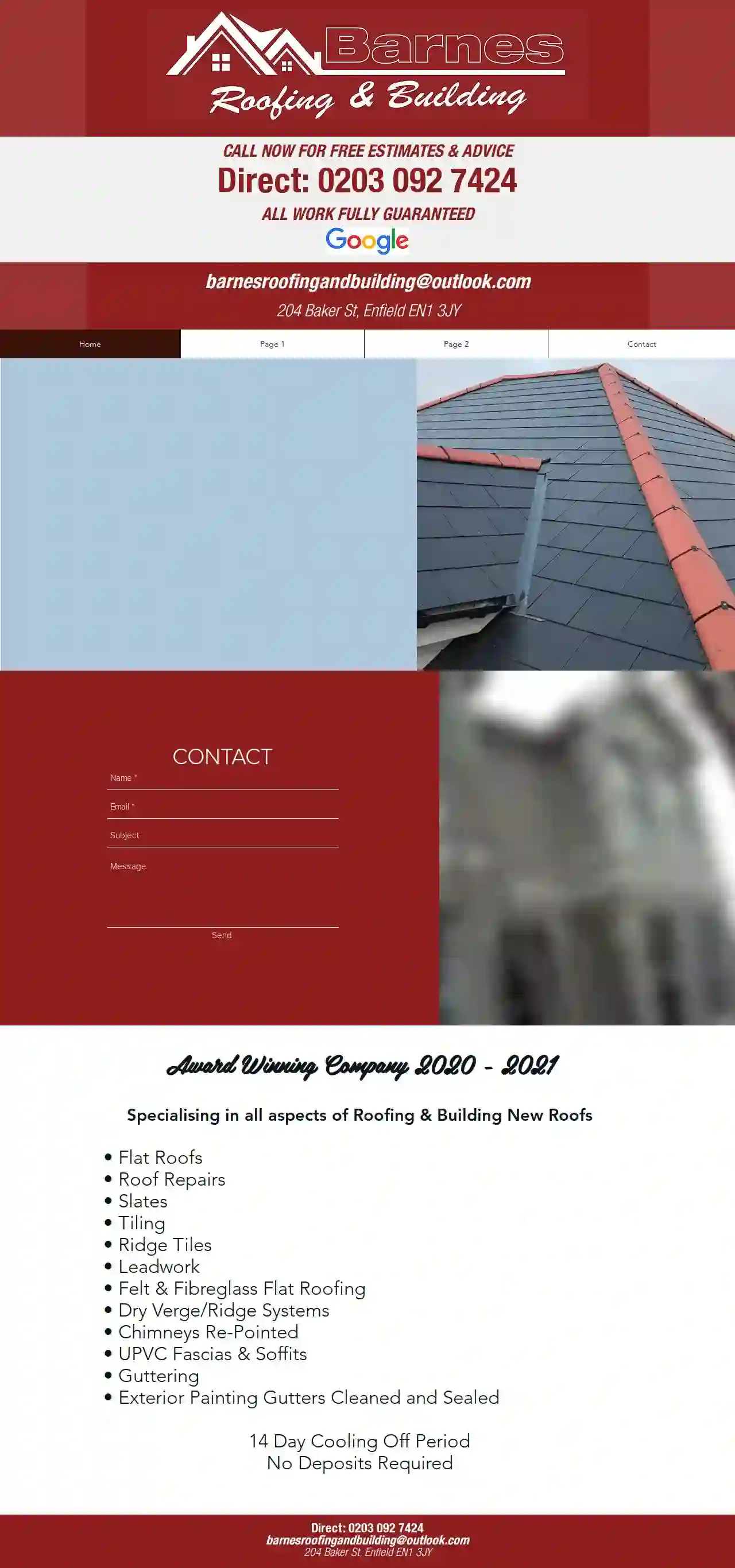Shingle Roof Repairs Islington
Find the best Fix Shingle Roof in Islington
Get 3 FREE Repair Shingle Roof quotes for your project today! Compare profiles, reviews, accreditations, portfolio, etc... and choose the best deal.

Barnes Roofing & Building
4.39 reviews204 Baker St, Enfield, EN1 3JY, GBAward Winning Company 2020 - 2021. Specialising in all aspects of Roofing & Building New Roofs. We offer a wide range of services including Flat Roofs, Roof Repairs, Slates, Tiling, Ridge Tiles, Leadwork, Felt & Fibreglass Flat Roofing, Dry Verge/Ridge Systems, Chimneys Re-Pointed, UPVC Fascias & Soffits, Guttering, and Exterior Painting. Gutters Cleaned and Sealed. 14 Day Cooling Off Period. No Deposits Required.
- Services
- Why Us?
- Gallery
Get Quote
London Platforms Roofing - High Level Roof Repair | 24/7 Emergency Roof Repair
4.229 reviews26-28 Burleigh Road, Enfield, EN1 1NY, GBLondon Platforms Roofing is a roofing company that provides a wide range of domestic, commercial, and industrial roofing solutions across London and the Home Counties. We pride ourselves on providing our customers with high-quality roofing services, using our unique fleet of lorries with cherry pickers to reach and fix roofs up to 35 meters high. Our team is passionate about roofs, knowing exactly what it takes to ensure quality and restore trust in the roofing industry.
- Services
- Why Us?
- Accreditations
- Gallery
Get Quote- Th
Thames Roofing Group Ltd
3.76 reviewsLondon, GB- Services
- Why Us?
Get Quote - Tr
Tr Roofing
511 reviewsLondon, GB- Services
- Why Us?
Get Quote - Do
Dontel Roofing Supplies Ltd
534 reviewsLondon, GB- Services
- Why Us?
Get Quote - Oa
Oakley Roofing And Guttering Ltd
3.65 reviewsLondon, GB- Services
- Why Us?
Get Quote - AR
ARK Roofing and building Ltd
412 reviewsLondon, GB- Services
- Why Us?
Get Quote - LD
LDN Roofing Solutions
3.418 reviewsLondon, GB- Services
- Why Us?
Get Quote - X
X L Roofing
56 reviewsLondon, GB- Services
- Why Us?
Get Quote - Ro
Roofshield London
4.47 reviewsLondon, GB- Services
- Why Us?
Get Quote
Over 12,314+ Roofing Companies onboarded
Our roofing contractors operate in Islington & surroundings!
Roofyng.co.uk has curated and vetted Top Roofers in and around Islington. Find a reliable contractor today.
Shingle Roof Repair FAQs
- Matching existing shingles: If possible, use the same type and color for a seamless look.
- Durability and lifespan: Choose shingles with a long lifespan and good resistance to weather and impact.
- Aesthetics: Select a style and color that complements your home.
- Cost: Consider your budget, but prioritize quality and durability for long-term value.
- Gentle cleaning: Use a soft brush and a solution of water and mild detergent to remove moss. Avoid harsh scrubbing or pressure washing.
- Chemical treatment: Apply a moss-killing solution, following the manufacturer's instructions carefully. Rinse thoroughly after application.
- Prevention: Trim overhanging branches to increase sunlight and install zinc or copper strips along the ridge, as these metals release ions that inhibit moss growth.
How do I choose the right shingle for my roof repair?
How do I fix a curled shingle?
How do I get rid of moss on my shingle roof?
Can I repair my shingle roof myself?
How do I choose the right shingle for my roof repair?
- Matching existing shingles: If possible, use the same type and color for a seamless look.
- Durability and lifespan: Choose shingles with a long lifespan and good resistance to weather and impact.
- Aesthetics: Select a style and color that complements your home.
- Cost: Consider your budget, but prioritize quality and durability for long-term value.
How do I fix a curled shingle?
How do I get rid of moss on my shingle roof?
- Gentle cleaning: Use a soft brush and a solution of water and mild detergent to remove moss. Avoid harsh scrubbing or pressure washing.
- Chemical treatment: Apply a moss-killing solution, following the manufacturer's instructions carefully. Rinse thoroughly after application.
- Prevention: Trim overhanging branches to increase sunlight and install zinc or copper strips along the ridge, as these metals release ions that inhibit moss growth.